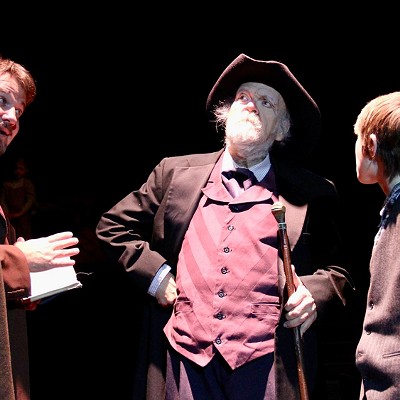“It’s 2014 and you should be proud of your city for several
reasons,” he told a crowd of about 1,600 people at the Cox Business Services
Convention Center.
According to Atlantic Monthly, OKC is one of the most
popular cities for millennials. The city also has been recognized nationally
for its low cost-of-living and for being a “great place to visit,” the mayor
said.
OKC also is considered “brainy” among cities of at least one
million people, and one of the fittest municipalities in the country due, in
part, to Cornett’s citywide weight loss initiative he started in 2007.
“This city has come a long way. Thirty years ago the economy
cratered, hundreds of banks failed and real estate values plummeted,” he said.
“We were an economic embarrassment 30 years ago. Today, construction takes
place in the north, south, east and west parts of the city and that means
jobs.”
Cornett noted that OKC has the lowest unemployment rate in
the nation and the highest pe

r capita growth rate in the U.S. He also made
special reference to the relocation of the General Electric Global Research
Center, which recently announced its move to OKC.
The mayor, who is seeking a record fourth term in office, praised
the city’s efforts to help the homeless and provide food to the poor while also
commending the city’s arts scene and “vibrant libraries.”
“We’re building new fire stations, a new police station and
new city parks. We’re adding new police officers and repairing streets as we
play catch up from years ago,” Cornett said.
Pain before success
Yet, Cornett believes much of OKC’s success the last two
decades would not have been possible without a tragedy that claimed the lives
of 168 innocent people at the Alfred P. Murrah Federal Building on April 19,
1995.
Two years earlier, voters had approved the original nine
MAPS projects but little progress had taken place before the bombing.
The city had overpromised how fast the projects could be
completed and cost estimates were too high, creating a mistrust of city
government and its ability to handle MAPS, Cornett said.
“Then the bombing occurred,” he said.
Afterwards, OKC leaders and residents developed a rallying
cry to recreate the city and turn it into a special place for its citizens and
guests.
“People of this city are unique,” the mayor said. “This city
has come a long way.”
Stepping further back into OKC’s history, Cornett referred
to the decades of the 1980s and 1990s as a time when the city and its citizens
failed to give up despite tough economic conditions.
Citing the leadership of then-Mayor Ron Norick and other
community leaders, Cornett spoke about the city’s failure to attract a major
United Airlines facility in 1991 and the birth of the MAPS brand.

“He (Norick) was searching for that magic that could change
Oklahoma City,” the mayor said.
OKC’s leaders submitted a bid to attract the facility, but
would up in second place. The reason OKC lost the United competition was simple,
Cornett said.
“Company officials could not imagine their employees living
here,” he told the audience. “They (city leaders) realized then that the
economic development paradigm was changing. Jobs were going to cities that
attracted people.”
As a result of that epiphany, the Metropolitan Area Projects
(MAPS) brand was borne. The nine projects, including the downtown baseball
stadium, Chesapeake Arena and the Bricktown Canal, were placed on one ballot.
“A lot of people suddenly were pulling on the same rope,”
Cornett recalled.
The MAPS measure passed with 53 percent of the vote in 1993.
Even if new jobs were not created by MAPS, city leaders knew
they would be creating a better city for their citizens, Cornett said.
In November 2001, OKC voters approved MAPS for Kids, a
measure that created an investment of $470 million for 24 school districts,
including the OKC district.
The MAPS 3 initiative, which is still ongoing, was approved
by voters in December 2009. MAPS 3 projects, valued at $777 million, will pay
for a new convention center, modern streetcar system, sidewalks, trails,
Oklahoma River improvements and senior citizen wellness centers.











